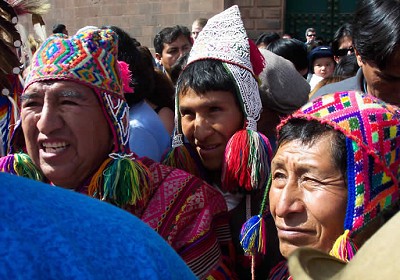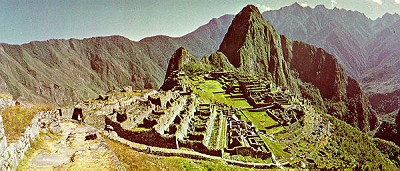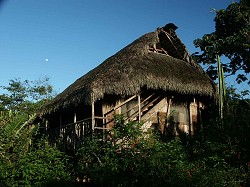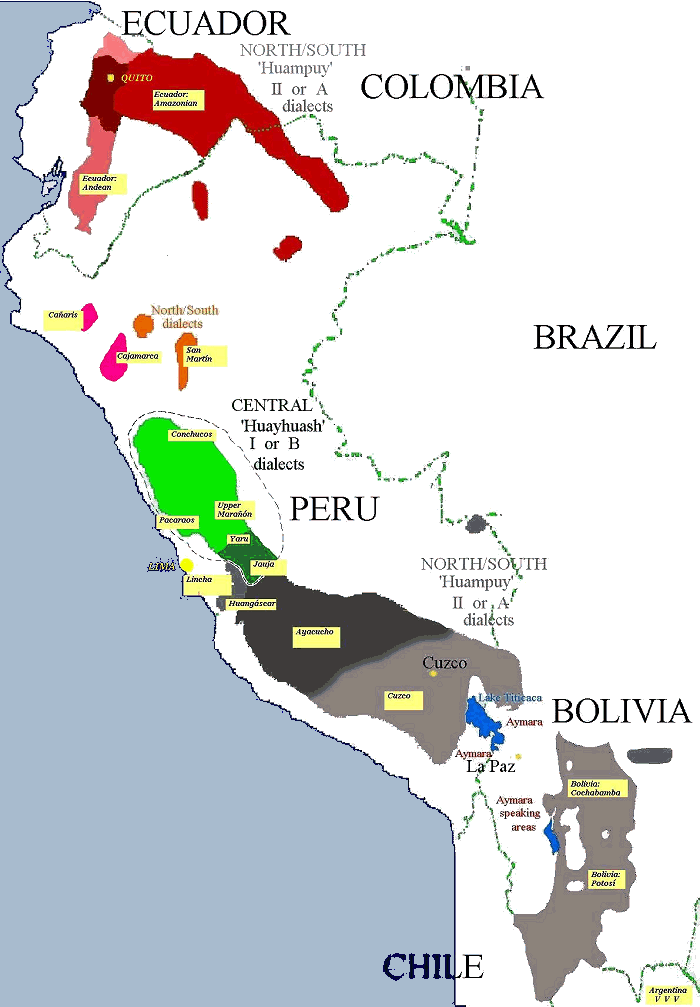

 Serena (Ecuadorian Amazon) |
Quechua (Runasimi in Quechua; Runa, "People" + Simi, "speech", literally "mouth") is a Native American language of South America. It was the language of the Inca Empire, and is today spoken in various dialects by some 9.6 million people throughout South America, including modern southern Colombia and Ecuador, all of Peru and Bolivia, north-western Argentina and northern Chile. It is the most widely spoken of all American Indian languages.
Quechua is a very regular language, but a large number of infixes and suffixes change both the overall significance of words and their subtle shades of meaning, allowing great expressiveness. It includes grammatical features such as bipersonal conjugation and conjugation dependent on mental state and veracity of knowledge, spatial and temporal relationships, and many cultural factors.
Today's theories about Quechua's origin put its initial territorial domain in modern Peru's Central Coast, possibly in the ancient city of Caral, around 2600 BC. Inca kings of Cuzco made Quechua their official language and, with Inca conquest in the 14th century, the Empire's language became Ancient Peru's lingua franca. By the time of the Spanish conquest, in the 16th century, the language had already spread throughout the South American continent.
Quechua has often been grouped with Aymara as a larger Quechumaran linguistic stock, largely because about a third of its vocabulary is shared with Aymara. This proposal is controversial, however: the cognates are close, often closer than intra-Quechua cognates, and there is little relationship in the affixal system. The similarities may be due to long time contact rather than from common origins.
The language was further extended beyond the limits of the Inca empire by the Catholic Church, which chose it to preach to Indians in the Andes area. Today, it has the status of an official language in both Peru and Bolivia, along with Spanish and Aymara. Before the arrival of the Spaniards and the introduction of the Latin alphabet, Quechua had no written alphabet. Numerical data was kept track of by the Incas through a system of khipu-strings.
There are two main dialect groups.
Quechua I or Waywash is spoken in Peru's central highlands. It is the most archaic and diverse branch of Quechua, such that its dialects have been often considered a different tongue.
Quechua II or Wanp'una (Traveler) is divided into three branches: Yunkay Quechua is spoken sporadicaly in Peru's occidental highlands; Northern Quechua (also known as Quichua or Runashimi) is mainly spoken in Colombia and Ecuador; Southern Quechua, spoken in Peru's southern highlands, Bolivia, Argentina and Chile, is today's most important branch because it has the largest number of speakers and because of its cultural and literary legacy.
